Gear Reviews
Nordstrand StarLifter Bass Preamp/DI Review
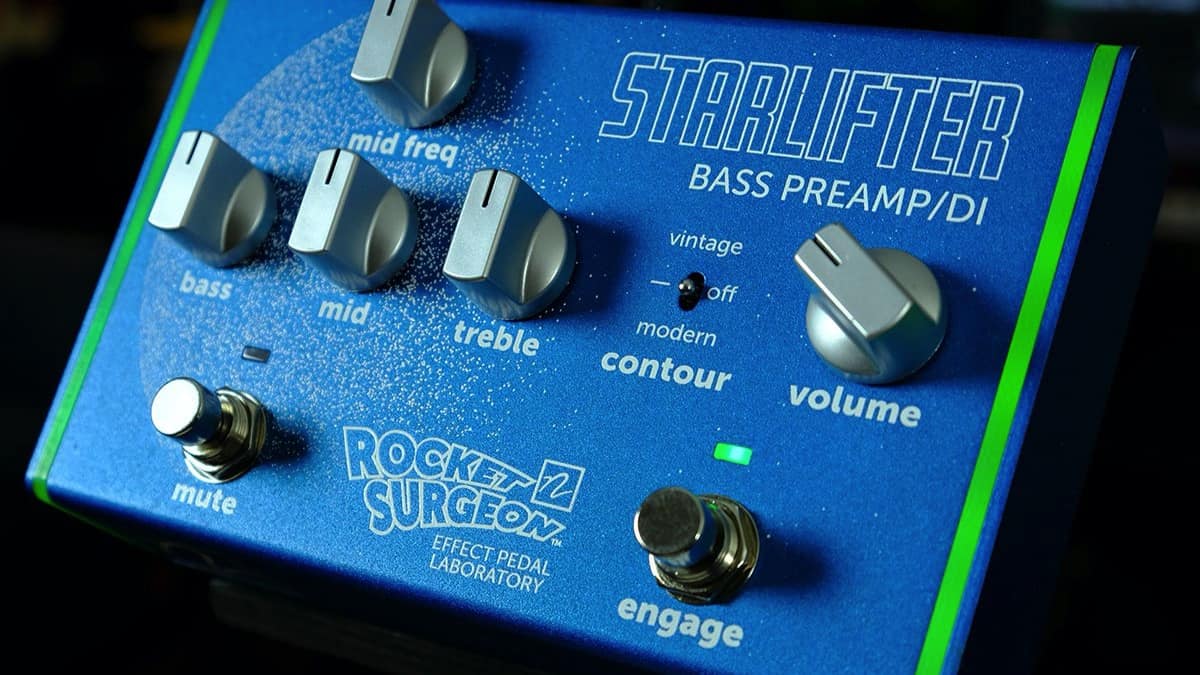
A review of the Nordstrand StarLifter Bass Preamp/DI…
Carey Nordstrand is one of the bass world’s most prolific modern-day characters, and chances are, you’ve come across his work, knowingly or not. After years of running an amazingly creative lutherie business out of his Southern California shop, where he handcrafted incredible exotic and traditional basses of extraordinary quality, Nordstrand launched a line of pickups and onboard electronics, which have become an industry benchmark for tone and innovation.
Several years back, Nordstrand partnered with Ibanez to put his famed Big Single and Big Split pickups in a number of their higher-end basses, effectively bringing boutique high-end bass pickups to the masses. Nordstrand has since all but phased out the bass building (not entirely true, if you’ve followed him on social media, you’ve probably seen his very limited runs of P basses, and his affordable and uber-cool Acinonyx series of retro-inspired short scale basses) to focus on the pickup game, and his line of traditional and unique pickup options is ever-expanding with creative and unique products.
A couple of years ago I started seeing effect pedals bearing the name “Rocket Surgeon Effect Pedal Laboratory” emanating from Carey’s shop, and was instantly curious, given the quality of everything that Carey puts his name on.
Following some cool overdrive/distortion/fuzz pedals and their Ice Caves reverb, the newest offering from Nordstrand/Rocket Surgeon is the StarLifter Preamp/DI. As Bass Musician Magazine has recently profiled the specs and details of the StarLifter, I’ll cut to the chase. The thing sounds good. Real good. I would expect no less from an outboard preamp bearing the swoopy ‘N’ logo, but plugging my basses into the StarLifter was immensely gratifying. It seems to work equally well with active and passive basses and imparted powerful tone shaping capability while retaining transparency, which is a lot easier said than done. The build quality is exquisite, with smooth feeling knobs and switches, and a very hefty and rugged chassis sporting some cool graphics.
I tried the StarLifter with a range of instruments, including 5-string passive P and J basses, an active Sadowsky 5-string, and my custom active 6 string, and with each bass, I was able to easily dial up fantastic tones that complemented the instruments’ inherent voicings. The StarLifter has an input impedance selector to optimize the unit’s input signal for different instruments, (for example, magnetic pickup output vs higher impedance piezo pickup output). It also has a 10 dB pad for the input, to reign in hotter signals.

There are a couple of noteworthy things about the StarLifter, besides its wonderful aesthetic, build quality and tone.
First, the volume knob works whether the pre is engaged or not, so even with the preamp bypassed, you have to set your level with the volume knob. The only downside is that it’s hard to tell where “actual” unity gain is, without the reference point of a passed through signal. Not a biggie, it didn’t slow me down much at all, but I thought it was worth mentioning, as it is different from other preamp boxes, where the signal is routed straight through when bypassed.
Also, let me give a serious shout out to the midrange control on the StarLifter.
I’ve messed around with a LOT of “sweepable mid” setups, where you have control over the boost/cut as well as the frequency center, also known as a ‘semi-parametric’ EQ control. Some seem to be more usable than others, depending on how the EQ is designed and the transparency of the circuit. The StarLifter’s sweepable mid control was sublime. It functioned exactly as I would have wanted it to: elegant and smooth yet powerful. I was very quickly able to dial up a perfect low mid bump, upper mid-cut and everything in between to craft my tone to my liking. The mid control ranges between 150 Hz to 2.8 KHz, which offers a very wide window of control. Boosting the EQ bands revealed just how quiet the unit is, adding almost no noise to the signal, muy bueno.

But probably the most magical and unique feature of the StarLifter is its 3-way Contour switch, offering Vintage and Modern EQ profiles in addition to its Flat setting.
I found these to be pretty spot on, and used them quite a bit, depending on the instrument. My passive 5 string jazz seemed to really like the Modern setting for killer 70’s J bass tone, while my P bass was almost perfectly voiced with the Vintage setting. Further fine-tuning for the presets was easy with the units EQ, resulting in a range of fantastic and usable sounds.
The StarLifter’s fully featured DI offers everything you’d want from a pro DI, including a 20dB pad, pre EQ/post EQ switch, and a ground lift. The DI signal sounded fantastic into my home recording DAW, due in part to the units architecture, and in part to the high quality componentry found in the StarLifter, like Burr Brown op amps.
And lest we overlook some bling bling, the StarLifter’s vibey pinstripe lighting is undoubtably cool. With the unit engaged, the edges glow green. Hit the mute switch and they turn red. Serious pedalboard atmosphere/coolness upgrade.
Another factor that’s worth mentioning is the power requirements of the StarLifter.
Included is a 15v AC adaptor, delivering 300mA. I am a diehard Voodoo Labs PP2+ user, and its outputs are not compatible with the StarLifter’s power needs, so plan on using a different power supply or the included AC adaptor.
All in all, the StarLifter is simple and highly effective.
There is something to be said for a preamp that is as simple as it can be while still providing the necessary features and options that pro players need. As many online users have attested, the StarLifter kinda just nails it, giving players straightforward and easy control over their sound, and doing with style and grace. Having gone on a bit of a pedalboard preamp journey myself as of late, I’m hard-pressed to not put the StarLifter at the top of the game, particularly in its price bracket. With a retail price of $349, it packs a lot of bang for the buck and is pretty tough to beat.
If you’re in the market for a pedal preamp for your axe, the StarLifter needs to be on your shortlist. For more info on the Nordstrand StarLifter Bass Preamp/DI, visit Nordstrand’s website.
Bass Videos
Review: CrystalBright Rombo Picks
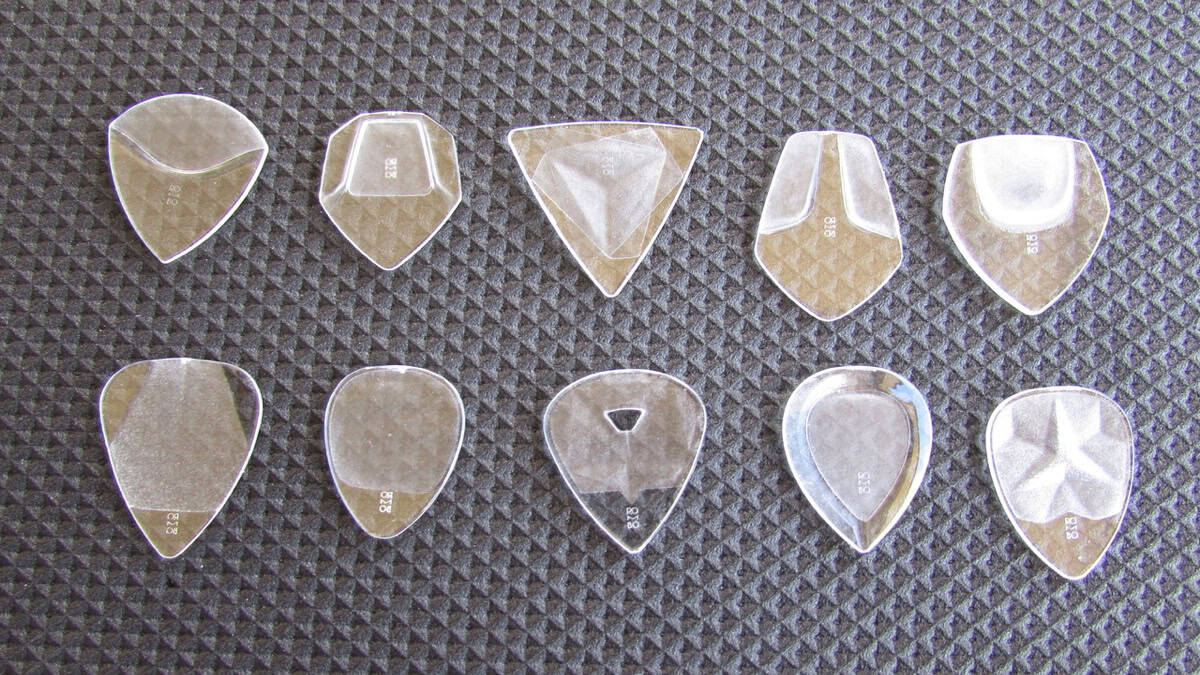
CrystalBright Rombo Picks
PR SamplePlaying bass with a pick is still a touchy subject in our community. I believe you should be able to use whatever you need to get your sound. Even though I mostly play with my fingers, I like to check out innovative new picks that might have something new to offer, sonically speaking.
Judith and Carlos from Rombo recently contacted me about a new material called CrystalBright that they have been researching for the last 12 months and offered to send some prototype picks. After trying them out, I put together this video with my findings.
For more info check out @rombopicks
Gear
New Joe Dart Bass From Sterling By Music Man

Sterling by Music Man introduces the Joe Dart Artist Series Bass (“Joe Dart”), named after and designed in collaboration with the celebrated Vulfpeck bassist.
Above photo credit: JORDAN THIBEAUX
This highly-anticipated model marks the debut of the Dart bass in the Sterling by Music Man lineup, paying homage to the Ernie Ball Music Man original that all funk players know and love. The bass embodies many of the original model’s distinctive features, from its iconic minimalist design to the passive electronics.

The design process prioritized reliability, playability, and accessibility at the forefront. Constructed from the timeless Sterling body, the Dart features a slightly smaller neck profile, offering a clean tone within a comfortable package. The body is crafted from soft maple wood for clarity and warmth while the natural finish emphasizes the simple yet unique look.
Engineered for straightforward performance, this passive bass features a ceramic humbucking bridge pickup and a single ‘toaster’ knob for volume control. Reliable with a classic tone, it’s perfect for playing in the pocket. The Dart is strung with the all-new Ernie Ball Stainless Steel Flatwound Electric Bass Strings for the smoothest feel and a mellow sound.

The Sterling by Music Man Joe Dart Bass is a special “Timed Edition” release, exclusively available for order on the Sterling by Music Man website for just one month. Each bass is made to order, with the window closing on May 31st and shipping starting in November. A dedicated countdown timer will indicate the remaining time for purchase on the product page. Additionally, the back of the headstock will be marked with a “2024 Crop” stamp to commemorate the harvest year for this special, one-of-a-kind release.
The Joe Dart Bass is priced at $399.99 (MAP) and can be ordered globally at https://sterlingbymusicman.com/products/joe-dart.
To learn more about Joe Dart, visit the official Vulfpeck artist site here https://www.vulfpeck.com/.
Gear Reviews
The Frank Brocklehurst 6-String Fretless Bass Build
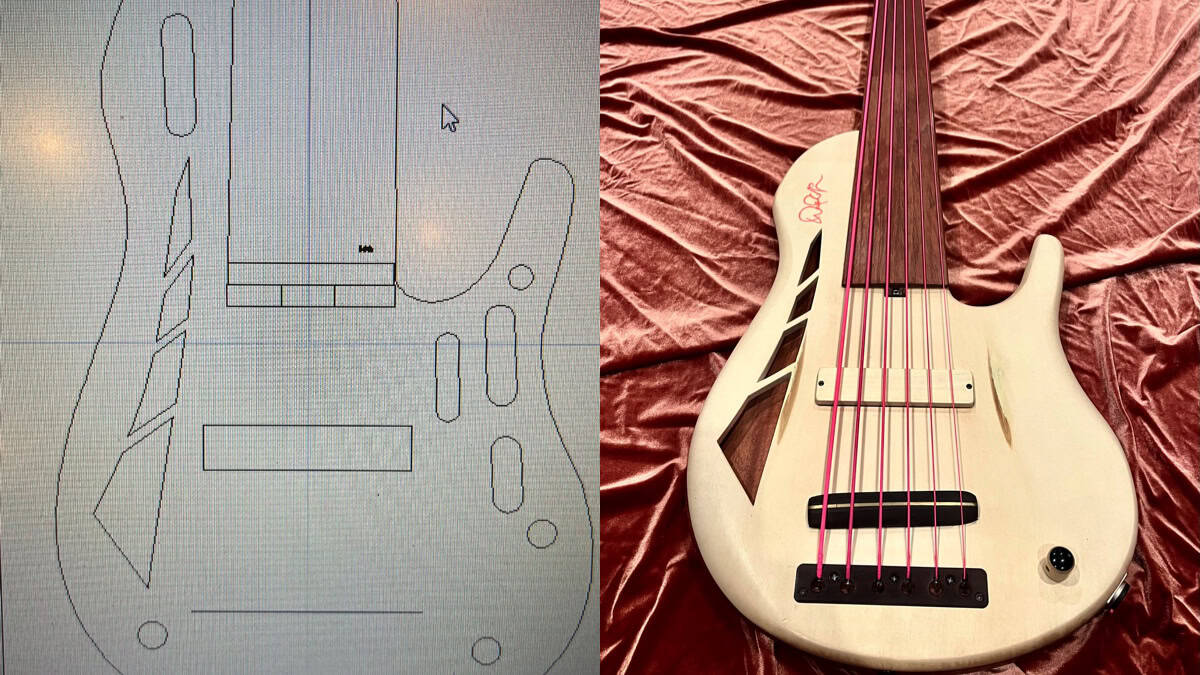
A few months ago, my Ken Bebensee 6-string fretted bass needed some TLC. You know, the one rocking those Pink Neon strings! I scoured my Connecticut neighborhood for a top-notch luthier and got pointed to Frank Brocklehurst, F Brock Music. He swung by my place, scooped up the bass, and boom, returned it the next day, good as new. Not only that, he showed up with a custom 5-string fretted bass that blew me away. I couldn’t resist asking if he could whip up a 6-string fretless for me.
Alright, let’s break down the process here. We’ve got our raw materials: Mahogany, Maple, and Holly. Fun fact – the Mahogany and Maple have been chilling in the wood vault for a solid 13 years. Frank is serious about his wood; they buy it, stash it away, and keep an eye on it to make sure it’s stable.
First up, they’re tackling the Mahogany. Frank glues it together, then lets it sit for a few days to let everything settle and the glue to fully dry. After that, it’s onto the thickness planer and sander to get it nice and flat for the CNC machine. The CNC machine’s the real star here – it’s gonna carve out the body chambers and volume control cavity like a pro.
While the Mahogany’s doing its thing, Frank goes onto the neck core. Three pieces of quartersawn maple are coming together for this bad boy. Quartersawn means the grain’s going vertical. He is also sneaking in some graphite rods under the fingerboard for stability and to avoid any dead spots. The truss rod is going to be two-way adjustable, and the CNC machine’s doing its magic to make sure everything’s just right.
Now, onto the design phase. Frank uses CAD software to plan out the body shape, neck pocket, chambering, and those cool f-holes. I had this idea for trapezoid F-holes, just to do something different. The CAD software also helps us map out the neck shape, graphite channels, and truss-rod channel with pinpoint accuracy.

Once everything’s planned out, it’s CNC time again. Frank cuts out the body outline, neck pocket, and the trapezoid F-holes. Then it’s a mix of hand sanding and power tools to get that neck just how we like it. Oh, and those f holes? We’re going for trapezoids of different sizes – gotta keep things interesting.
Next step: gluing that neck into the pocket with some old-school hide glue. It’s got great tonal transfer and can be taken apart later if needed. Then it’s onto hand-carving that neck-body transition.
For the custom-made bridge, Frank uses brass for definition and Ebony for tonal transfer and that warm, woody sound.
BTW, for tunes, Frank went with Hipshot Ultralights with a D Tuner on the low B. This way I can drop to a low A which is a wonderful tone particularly if you are doing any demolition around your house!
Now it’s time for the side dots. Typically, on most basses, these dots sit right in the middle of the frets. But with this bass, they’re placed around the 1st, 3rd, 5th, 7th, 9th, and 12th frets.
Frank’s got his pickup hookup. Since the pickup he was building wasn’t ready, he popped in a Nordstrand blade to give it a whirl.
It sounded good, but I was itching for that single-coil vibe! And speaking of pickups, Frank showed me the Holly cover he was cutting to match, along with all the pink wire – talk about attention to detail!
A couple of things, while it is important for me to go passive, it is equally important for me to just go with a volume knob. Tone knobs are really just low-pass filters and the less in the way of a pure sound for me, the better.
Finally, it’s string time! As usual, I went for the DR Pink Neon strings. Hey, I even have matching pink Cons…Both low tops and high!
Once we’ve got everything tuned up and settled, we’ll give it a day or two and then tweak that truss rod as needed. And voila, we’ve got ourselves a custom-made bass ready to rock and roll.
I want to thank Frank Brocklehurst for creating this 6 string beast for me.
Gear Reviews
Review Transcript: BITE Custom Bass – The Black Knight PP Bass
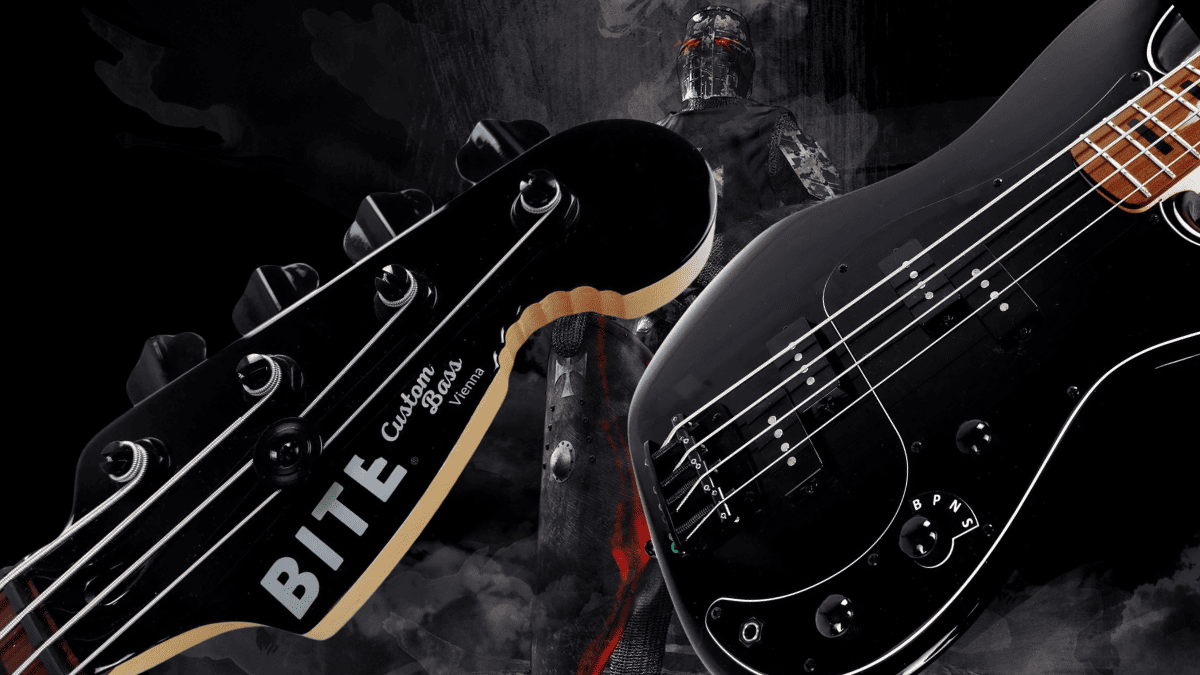
This is a written transcript of our video review of the BITE Custom Bass Black Knight PP Bass originally published on March 4, 2024
BITE Custom Bass – The Black Knight PP Bass Review…
Bass Musician Magazine did a review on a Steampunk bass from BITE Guitars about three years ago, it was an amazing instrument, and we were very impressed. Now we’re happy to bring you another BITE bass, the Black Knight PP.
Everybody needs a P-type bass, it’s the standard of bass. If you’re recording, they want you to have a P bass. So why not have something that gives you a little more by having two instead of one P pickup. That’s the idea of this bass, it’s the first thing that leaps out: the double P pickup configuration.
Installing two of their 1000 millivolt split-coil pickups, BITE then went one step further and wired them up in a 4-way parallel/series circuit, a look at the controls reveal a 4-way rotary selector:
The first position, marked “B”, gives you the bridge pickup by itself.
The second position, marked “P”, gives you the bridge and neck pickups in parallel mode, that’s the traditional J-type circuit, it reduces output due to the physical law of parallel circuits.
Position number 3 is marked “N”, it gives you the neck pickup by itself.
And finally, number 4, marked “S”, gives your bridge and neck in a series (humbucking) mode which adds up resistances and thus boosts output. The other two controls are master volume and master tone.
What’s more, like every BITE bass, this one also has a reinforced headstock heel designed to give it extra output and sustain. The BITE website features a graph and explanation of what they have done to the heel, as compared to traditional headstocks.
A look at the body reveals a beautiful Black Blast body finish and underneath that we have alder wood. The bass has a matching headstock with a 4-in-line tuner setup and the traditional bite out of it, so everybody will know what kind of bass you’re playing. The pickguard is 3-ply black, the neck is vintage tinted hard maple and it has a satin speed finish at the back which keeps your thumb from sticking.
On top of that, there’s a clear-coated roasted black locust fretboard with black blocks marking the frets. The nut is a black Graph Tec nut, we’ve got diamond dome control knobs, and the tuners are lightweight compacts with cloverleaf buttons and a 1:17 ratio precision gear. The bridge is a Gotoh brass bridge with 19-millimeter string spacing.
Overall measurements: we’ve got a standard 34″ scale, a 1.65″ width nut and a C neck profile. This bass weighs 8.2 pounds, or 3,7 kilograms for our metric friends, and it uses standard 18% nickel silver frets.
Taking a closer look at the sound, this bass is a joy to play. The BITE proprietary 1000 millivolt pickups deliver an extraordinary amount of output which is surprising considering this is a passive instrument. You may even want to set your amp to active mode because of all of the juice you’re getting out of this guy.
The tonal possibilities are very versatile, it’s a straight P if you want but also much more with those different arrangements of the circuitry. So why have multiple basses when you’ve got one that can give you your basic P plus a lot more?
To sum it up, the Black Knight PP is an amazing instrument. The attention to detail that BITE puts into their basses is second to none. This bass is also amazingly balanced and gorgeous to hold and feel with the satin neck finish.
For more information, visit online at bite.guitars/product/black-knight-pp
Bass Videos
Reviews: Phil Jones Bass Compact Plus 450 and Bass Engine 17
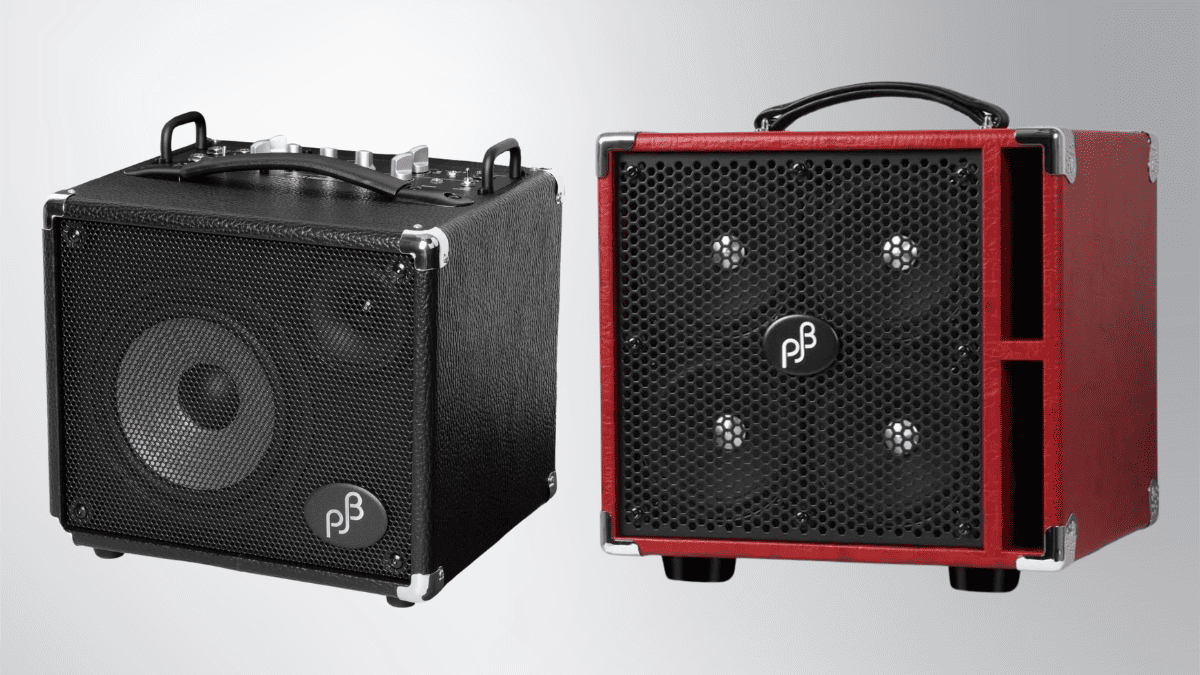
Phil Jones Bass Compact Plus 450 and Bass Engine 17 Reviews…
In this issue, we take an in-depth look at two new amps from Phil Jones Bass, the Compact Plus 450 and Bass Engine 17.
For more information, visit online at pjbworld.com






















